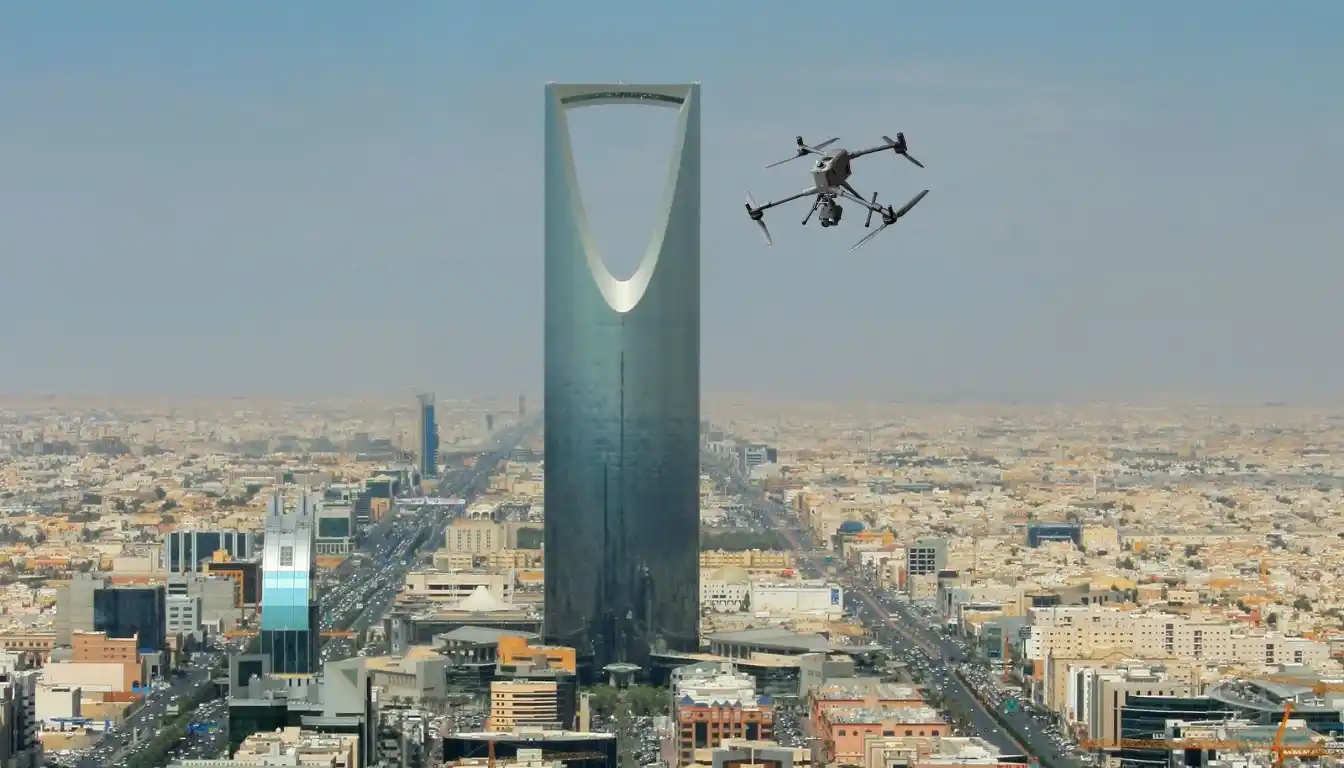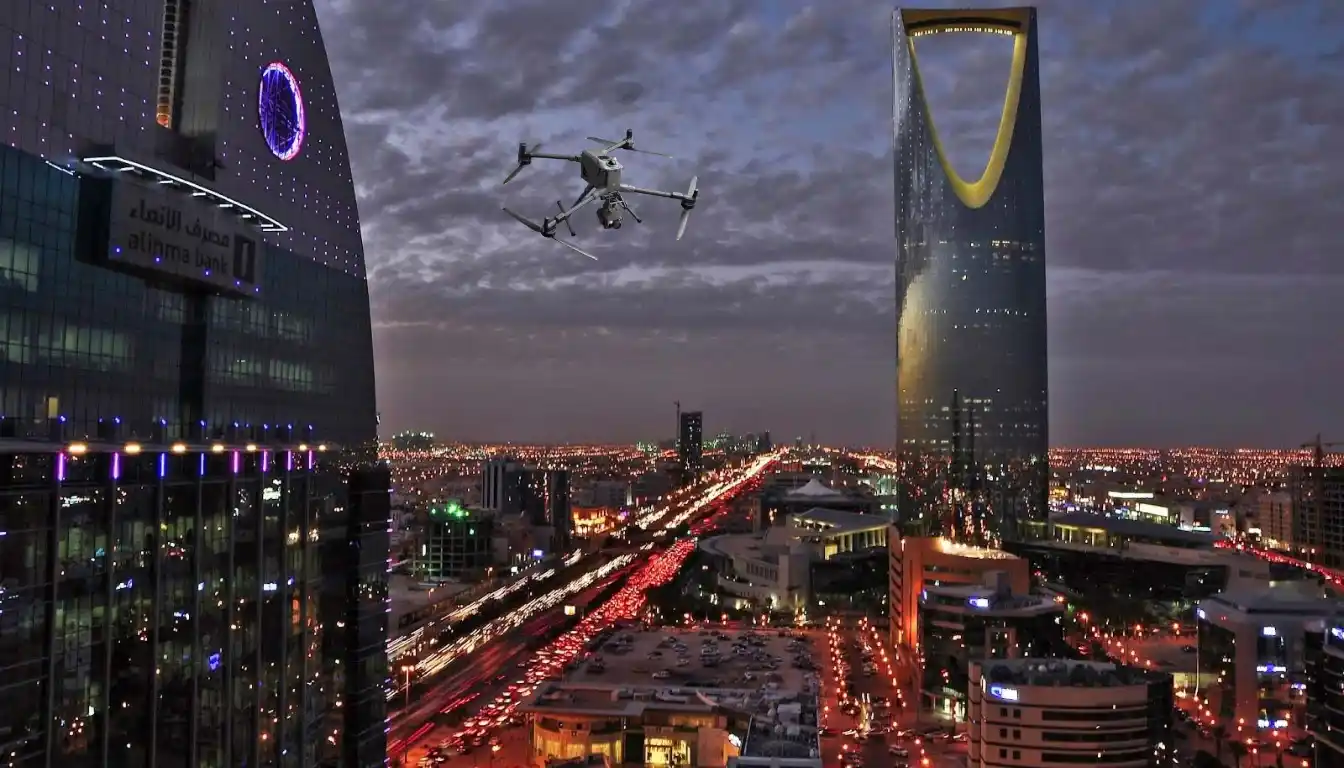The scale and speed of construction across Saudi Arabia from NEOM to ROSHN are rewriting the global rules of project management. Under the demanding mandate of Vision 2030, a months-long delay in acquiring foundational data is no longer an option. Project timelines have compressed to the point where the traditional methods used for decades simply fail to keep pace. This urgent demand for speed and accuracy has driven the convergence of Digital Twins and Reality Capture technology to become the new geospatial standard.
As a specialized provider in the Middle East, Terra Drone Arabia understands that the first step in building a smart city or giga-project is flawlessly mapping the ground it stands on. This in-depth look explores how drone-based Reality Capture has ignited a revolution in topographic surveying, delivering critical project data not just faster, but with superior quality, and fundamentally setting the stage for the creation of a dynamic digital twin.
I. The Bottleneck: Why Traditional Surveying Can’t Deliver Vision 2030
To appreciate the scale of this technological leap, we must first recognize the fundamental limitations of the legacy methods that dominated surveying for decades. Project managers frequently encountered debilitating bottlenecks caused by reliance on ground-based techniques.
A. The Six-Month Wait: A Necessary Evil of Legacy Systems
Traditional large-scale topographic surveying heavily relies on a painstaking, point-by-point process involving Total Stations and ground-based GPS. For the vast, complex, and often rugged terrains characterizing Saudi giga-projects, this method presents multiple, non-negotiable pain points:
- Manpower and Time Constraints: The process demands massive field crews and extensive ground access. For an average large-scale project area, the logistical complexity alone meant waiting up to six months to compile the foundational topographic data.
- Safety Hazards: Deploying personnel into remote, high-altitude, or hazardous coastal environments to collect points creates significant safety risks, leading to costly compliance procedures and delays.
- Low Data Density: Ground-based techniques capture discrete points. When engineers need to move quickly, this data density can prove insufficient for detailed volumetric calculations or millimeter-accurate BIM integration.
The six-month wait for foundational data became a project constraint, a necessary evil that Vision 2030’s accelerated timelines simply cannot afford. This market urgency created the perfect environment for a transformative solution.
II. Reality Capture: The Geospatial Engine for Giga-Project Speed

The solution to the six-month bottleneck is the aggressive adoption of Reality Capture—a technological shift that moves surveying from a point-measurement exercise to a continuous, ultra-high-density 3D data capture mission.
A. The Drone Hardware Supremacy
The modern Reality Capture ecosystem relies on multi-payload, heavy-lift platforms built for endurance and high precision, capable of operating reliably in the harsh Middle Eastern climate.
- Drone LiDAR: Terra Drone Arabia leverages proprietary systems like the Terra LiDAR One to transform data acquisition across the Kingdom. LiDAR sensors unleash millions of laser pulses per second, collecting massive geometric datasets that effectively penetrate vegetation to map bare earth terrain quickly.
- High-Resolution Photogrammetry: We also utilize best-in-class platforms like the DJI Matrice 400 (M400), which boasts robust all-weather performance and long flight times of up to 59 minutes, ideal for large area mapping. When equipped with the Zenmuse P1 sensor—featuring a 45MP full-frame sensor and a global mechanical shutter—this duo captures centimeter-accurate data for high-resolution 3D models and orthophotos. The M400 with P1 is specifically designed for large-scale surveying and mapping, covering substantial areas in a single flight and is critical for generating the textured, accurate models required for a digital twin.
B. Quantifying the Transformation: 50% Time Reduction
The efficiency gains are no longer theoretical; they are quantifiable and strategically vital for meeting the Kingdom’s deadlines.
The Core Argument: While traditional large-scale topographic surveys take up to six months, an equivalent drone-based LiDAR survey cuts this time by a remarkable 50%, requiring only three months, ensuring giga-projects decisively meet aggressive deadlines.
This transformation is achieved through streamlined data collection coupled with immediate data processing capabilities. Furthermore, Photogrammetry complements the LiDAR data by adding texture and visual orthophotos, enriching the captured geometric reality.
III. Achieving Survey Grade Accuracy: Data Quality and Compliance
The technical professional needs assurance: does this monumental speed sacrifice the necessary survey-grade accuracy? Modern Reality Capture maintains and often surpasses the accuracy standards of traditional methods.
A. The Role of Precision Hardware
Precision hinges on the quality of the drone’s platform and its advanced navigation systems. Our systems utilize integrated, survey-grade Inertial Measurement Units (IMU) and Global Navigation Satellite Systems (GNSS) to maintain centimeter-level precision. The Zenmuse P1, for example, achieves horizontal accuracy of 3 cm and vertical accuracy of 5 cm without Ground Control Points (GCPs) by utilizing its TimeSync 2.0 system and RTK positioning. This ensures that every one of the millions of captured points is georeferenced with the fidelity demanded by structural engineers and urban planners.
B. Auditable Data Processing and Compliance
Fast data collection is useless without a framework to process and validate it. This is where the Terra Drone Arabia data pipeline comes in:
- Quality Control: Platforms like Terra LiDAR Cloud and Terra Mapper process the raw data, performing calibration, classification, and detailed quality checks. This critical step ensures the integrity of the data and provides the auditable documentation necessary for compliance with stringent Saudi regulatory and project mandates.
- Seamless BIM/GIS Integration: The final reality capture output is delivered in formats perfectly tailored for immediate integration into Building Information Modeling (BIM) and Geospatial Information Systems (GIS) platforms. This instant interoperability allows engineers to immediately use the data for design validation, accelerating the project lifecycle.
IV. Beyond Topography: Expanding Reality Capture Value

The initial investment in drone-based Reality Capture for topographic surveying is not a one-off cost; it is the acquisition of a digital asset that unlocks ongoing value across the entire project lifecycle.
A. Construction Progress and Volumetric Analysis
The same high-accuracy data collection process can be applied weekly or even daily, providing unparalleled insight into construction progress. This means:
- Rapid Stockpile Calculation: Instant, accurate volume analysis of materials, moving beyond inaccurate manual estimates.
- Cut & Fill Analysis: Precise measurement of earthwork volumes, ensuring the project adheres to cost and design specifications.
- Digital Progress Tracking: Creation of 4D models that track construction progress against the project schedule, providing transparent and real-time updates to stakeholders.
B. Full-Spectrum 3D Data
Reality Capture extends far beyond surface topography. Integrating other specialized sensors provides a complete 3D digital picture of the entire site:
- Subsurface Mapping: Underground Utilities mapping using Ground Penetrating Radar (GPR) ensures essential data is captured for all utility corridors.
- Coastal Integrity: Bathymetry surveys are critical for near-shore infrastructure, providing foundational data for coastal giga-projects like Red Sea Global.
This comprehensive data set serves as the accurate, living geospatial foundation required for a dynamic Digital Twin, the ultimate operational tool for the smart city.
Conclusion
The revolution in topographic surveying, driven by the convergence of Digital Twins and Reality Capture, is now a fundamental necessity for the Kingdom’s success. By cutting foundational data acquisition time from six months to three, developers gain months of crucial lead time, ensuring they meet the ambitious deadlines of Vision 2030 while simultaneously enhancing safety and data quality.
Terra Drone Arabia stands as your essential local partner in this digital future. We combine proven global technology like the DJI M400 with Zenmuse P1 with unparalleled local expertise and compliance to deliver the absolute precision data your projects demand.
Let’s jumpstart your digital transformation and claim a FREE 3-month progress monitoring period on a key surveying service. Start building your dynamic digital twin with the most accurate reality capture data available today. Contact our expert team to schedule your consultation and ensure your project is a leading example of the Vision 2030 future.
